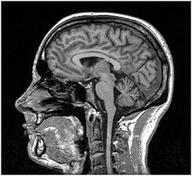IDE vs SATA: Understanding Storage Interface Differences
Advertisement
When it comes to connecting storage devices like hard drives to your computer’s system bus, you’ll encounter different interface types. Two common ones are IDE and SATA. Let’s break down the key differences between these two.
What are IDE and SATA?
Both IDE (Integrated Drive Electronics) and SATA (Serial Advanced Technology Attachment) serve the same basic purpose: to enable communication between your computer’s motherboard and storage devices. However, they achieve this in different ways, resulting in varying performance and capabilities.
IDE: The Older Standard
Features of IDE Interface
- Name: Integrated Drive Electronics
- Introduction: 1986
- Also Known As: Parallel ATA
- Speed: Slower compared to SATA
- Hot Plugging: Does not support hot plugging (connecting/disconnecting while the system is running)
- Data Transfer Speeds: Supports 16, 33, 66, 100, and 133 Mbps
- Cable Type: Ribbon-like with 40 or 80 wires
- Cable Length: Approximately 18 inches
- Power and Data: Uses a single cable for both power and data signals
- Air Flow: Wide cable can obstruct airflow

Image: IDE Cable
SATA: The Modern Standard
Features of SATA Interface
- Name: Serial Advanced Technology Attachment
- Introduction: 2003
- Also Known As: Serial ATA
- Speed: Faster compared to IDE
- Hot Plugging: Supports hot plugging
- Data Transfer Speeds: Supports 1.5, 3, 6, and 16 Gbps
- Cable Type: Narrow cable
- Cable Length: Approximately 3 feet (1 meter)
- Power and Data: Uses separate cables for data and power signals
- Air Flow: Narrow cable allows for better airflow

Image: SATA Cable
Key Differences Summarized
| Feature | IDE (Parallel ATA) | SATA (Serial ATA) |
|---|---|---|
| Introduction | Older (1986) | Newer (2003) |
| Speed | Slower | Faster |
| Hot Plugging | Not Supported | Supported |
| Data Speeds | Up to 133 Mbps | Up to 16 Gbps |
| Cable Type | Wide, ribbon-like | Narrow |
| Cable Length | Shorter (approx. 18 inches) | Longer (approx. 3 feet/1 meter) |
| Power/Data | Single cable for both | Separate cables |
| Airflow | Can obstruct airflow | Better airflow |
Conclusion
In essence, SATA has largely replaced IDE as the standard for connecting storage devices due to its improved speed, hot-plugging capabilities, and better cable design that promotes airflow. While IDE is still found in older systems, SATA is the prevalent interface in modern computers. Understanding these differences helps in choosing the right storage solutions for your needs.
Advertisement
 T&M
T&M 




